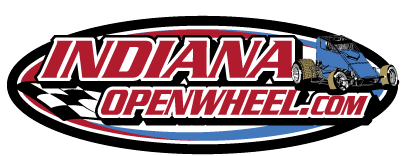| Home | Register | Quick Links | FAQ | Donate | Contact |
 Indiana Open Wheel
> Indiana Open Wheel Forum
>
USAC Rule Update 1/24
Indiana Open Wheel
> Indiana Open Wheel Forum
>
USAC Rule Update 1/24
|
| Thread Tools |
| 1/27/25, 2:18 PM |
#21
Re: USAC Rule Update 1/24
|
|
|
Senior Member
Join Date: Mar 2011 Posts: 342 |
Not the best photo, but it might give you a better understanding. I took this photo Saturday.
Bart
__________________
Connecting Buyers & Sellers
RadiusNation.net |
|
| 1/27/25, 2:26 PM |
#22
Re: USAC Rule Update 1/24
|
|
|
Senior Member
Join Date: Mar 2011 Posts: 342 |
Here is a better angle, but I still don't understand if this it the 5th shock.
Bart
__________________
Connecting Buyers & Sellers
RadiusNation.net |
|
| 1/27/25, 4:54 PM | #23 | ||
|
Senior Member
Join Date: Sep 2017 Posts: 714 |
Quote:
Drinan or Dicely could explain it. |
||
|
|
|||
| 1/27/25, 5:54 PM | #24 | |
|
Senior Member
Join Date: Aug 2008 Posts: 1,005 |
Missing in 2nd picture but the mount is there on the bird cage.
|
|
|
|
||
| 1/27/25, 7:23 PM |
#25
Re: USAC Rule Update 1/24
|
||
|
Member
Join Date: Oct 2013 Posts: 139 |
Whereas the "main" or "usual" shock is oriented close to the vertical and approximately at 90 deg. to the axle, and is most effective in dampening wheel motion in bump and rebound, the "5th" or auxiliary shock, by virtue of being oriented at about 45 deg. is more effective at dampening chassis roll motion.
If the valving of the main shock were stiff enough to provide the same roll dampening as is provided by the auxiliary shock, it would be too stiff to allow the needed compliance for good tire performance. |
||
|
|
|||
| 1/28/25, 8:29 AM |
#26
Re: USAC Rule Update 1/24
|
||
|
Senior Member
Join Date: Nov 2007 Posts: 266 |
Quote:
By the way - coil-over suspension suspends the car at or above the roll center which adds some anti-roll itself. Tim Simmons |
||
| 1/28/25, 5:12 PM |
#27
Re: USAC Rule Update 1/24
|
||
|
Senior Member
Join Date: May 2017 Posts: 2,331 |
Quote:
|
||
|
|
|||
| 1/28/25, 5:29 PM |
#28
Re: USAC Rule Update 1/24
|
||
|
Member
Join Date: Oct 2013 Posts: 139 |
Quote:
The reason that the spring linked ladder connection fell out of favor, as I understand it, was because of very erratic handling when the spring failed. |
||
|
|
|||
| 1/28/25, 6:14 PM |
#29
Re: USAC Rule Update 1/24
|
||
|
Senior Member
Join Date: May 2017 Posts: 2,331 |
Thanks Frank. I find your posts quite informative, much appreciated..
|
||
|
|
|||
 Indiana Open Wheel
> Indiana Open Wheel Forum
>
USAC Rule Update 1/24
Indiana Open Wheel
> Indiana Open Wheel Forum
>
USAC Rule Update 1/24
|
«
Previous Thread
|
Next Thread
»
All times are GMT -4. The time now is 1:16 PM.

